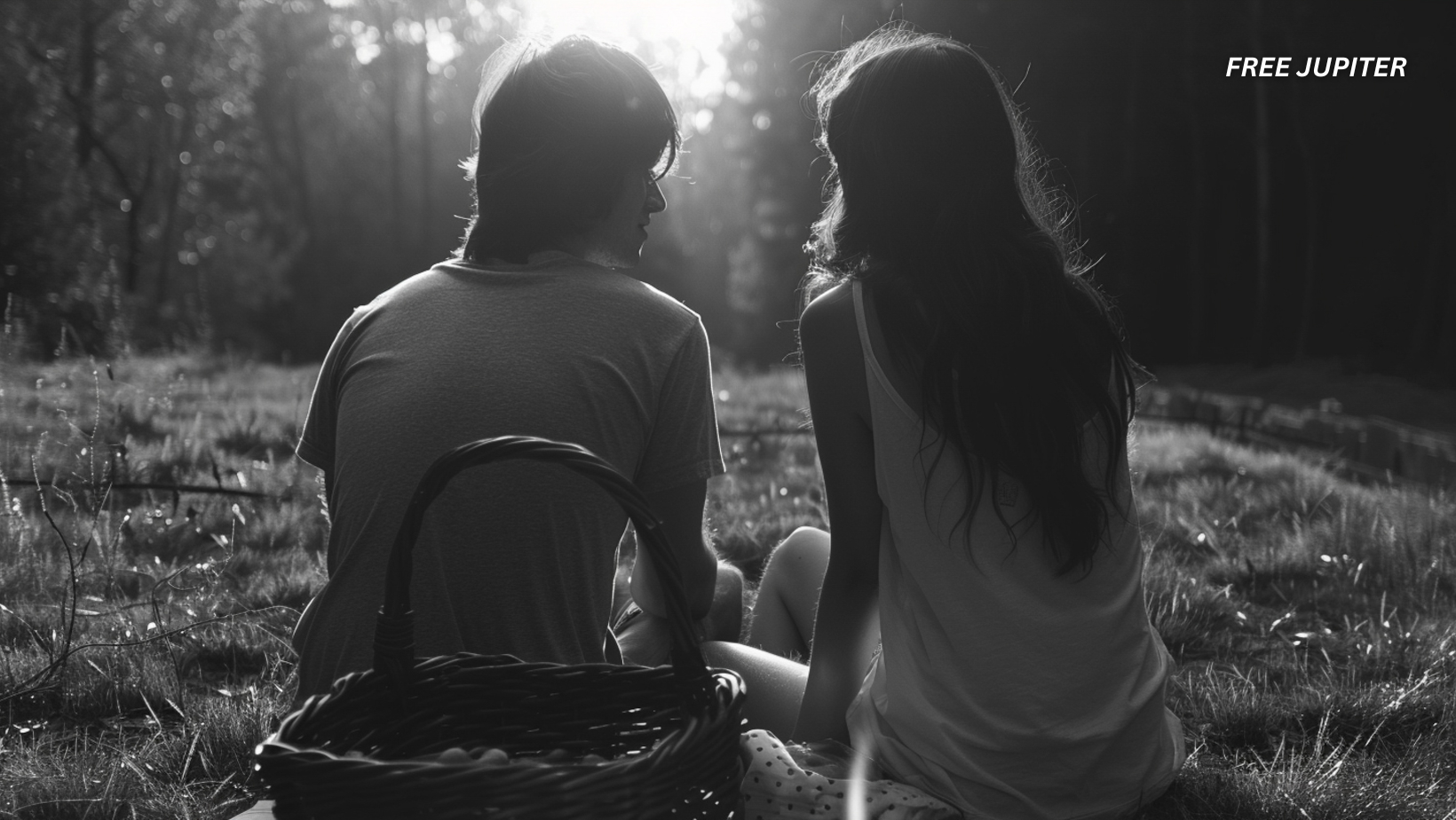Friendly Note: FreeJupiter.com shares general info for curious minds 🌟 Please fact-check all claims—and always check health matters with a professional 💙
Have you ever found yourself lying awake at night wondering if your relationship is doomed just because you’re not feeling that intense, electric pull you once did? Maybe you’re not spontaneously locking lips in the kitchen or can’t remember the last time you had a steamy make-out session. It can feel unsettling—like something has quietly gone missing. But what if that change isn’t a red flag at all? What if it’s actually a bright green flag that your relationship is moving into a healthier, more emotionally rich phase?
As odd as it sounds, less frequent spontaneous intimacy doesn’t mean something is broken. In fact, according to relationship experts and psychologists, this shift may actually signal growth, security, and something far more meaningful than those early relationship butterflies.
Let’s break it down.
The Passion Drop-Off Panic
We live in a world that glamorizes passion. From rom-coms and romance novels to TikTok and music videos, we’ve been conditioned to believe that a “real” relationship includes constant physical chemistry and impulsive desire. So when that burning attraction cools down a little, people often assume the worst.
But here’s the twist: that shift is normal. It’s not a glitch. It’s a feature.
Psychologists have observed that romantic relationships tend to evolve. The sizzling, head-over-heels attraction we feel at the start is exciting and often intense, but it’s not built to last forever. Why? Because it’s based on novelty and adrenaline—two things the human brain naturally adjusts to over time.
So if you’re feeling less of that heat, don’t panic. It may actually mean your body and mind have found safety—and in relationships, safety is a very good thing.
Read more: 10 Relationship Red Flags in Women, According to Experts
Meet the Two Types of Desire: Spontaneous and Responsive
According to Dr. Emily Nagoski, a renowned sex educator and author, there are two major types of sexual desire: spontaneous and responsive.
1. Spontaneous Desire
This is the kind that most people associate with romance. It’s fast, unpredictable, and often shows up without warning. You might feel a strong urge just by looking at your partner or hearing their voice. This type of desire is most common in the early stages of a relationship, when everything feels new, thrilling, and just a bit dangerous (in a fun way).
It’s heavily tied to the brain’s reward system. That first kiss? Dopamine rush. That flirty glance? Brain fireworks. It’s like emotional caffeine—it gives you a jolt and makes you want more.
But here’s the catch: it fades. Not because love is fading, but because your brain adapts to the “newness.” What once felt electrifying becomes familiar. Comfort replaces surprise. And that’s when the second type of desire often takes the lead.
2. Responsive Desire
This one is quieter, gentler, and often overlooked. Responsive desire isn’t a bolt from the blue—it’s more like a warm fire slowly coming to life.
You might not feel “in the mood” until you’re already holding hands, cuddling, or having an intimate conversation. This desire responds to connection, not just chemistry. It builds after emotional or physical closeness has already started. Think of it like simmering soup—it takes longer to heat up, but it’s just as nourishing (and sometimes even more satisfying).
Responsive desire is especially common in long-term, emotionally safe relationships. It’s a natural progression, not a downgrade.
Why We Misinterpret the Shift
Most of us grew up with a very specific idea of what romance is supposed to look like. It’s spontaneous. It’s urgent. It’s filled with sparks. So when that fades, it can feel scary—like you’re falling out of love. But that’s just the cultural myth talking.
In reality, constantly feeling that intense craving isn’t always a sign of a healthy relationship. In fact, it can sometimes show up in unstable or emotionally volatile connections where the uncertainty fuels the attraction. That rollercoaster may feel passionate, but it’s often tied to anxiety or lack of emotional grounding.
People often confuse that “can’t live without you” urgency with real closeness. But authentic intimacy isn’t about chaos. It’s about being able to exhale—to feel safe, seen, and understood.
Read more: These Silent Relationship Killers Are Ending Marriages Every Day
Comfort Isn’t Boring. It’s Intimacy.
Here’s where it gets interesting. That cozy feeling—the one where you can sit in silence together, share weird jokes, or just watch a movie in pajamas without feeling pressured to “perform”—that’s intimacy. And intimacy is the soil where responsive desire thrives.
In emotionally mature relationships, desire isn’t gone; it just grows differently. It matures. It may not scream, but it hums. And that hum can carry you much farther than the loud bang of early-stage infatuation.
Psychotherapist Pamela Mendelsohn notes that responsive desire is often more sustainable. It doesn’t rely on adrenaline or drama. Instead, it feeds on trust, mutual care, and emotional safety. It’s less of a firework and more of a candle—still glowing, but steadier.
You’re Not “Broken”—You’re Just Evolving
If you’ve ever thought, “Why don’t I want my partner like I used to?”, the answer isn’t necessarily, “Because something’s wrong.” It might just be that your relationship has entered a deeper stage—one that requires a new perspective on what desire really is.
Dr. Nagoski emphasizes that responsive desire is perfectly normal and often linked to better long-term intimacy. But because society rarely talks about it, many people feel ashamed or confused when spontaneous desire fades.
They start asking:
- “Is something wrong with me?”
- “Do we need to spice things up?”
- “Are we falling out of love?”
The answer is usually no. You’re just adjusting to a more realistic—and often more emotionally fulfilling—way of connecting.
When Should You Be Concerned?
While responsive desire is normal, it’s still important to check in with yourself and your relationship. If desire disappears completely, and emotional connection starts to feel distant too, that could be a sign to have an open, honest conversation with your partner (or even a therapist).
But lack of frequent spontaneous passion alone? That’s not a red flag—it’s likely a green one.
Ask yourself:
- Do I feel emotionally safe?
- Can I be myself with my partner?
- Do we show affection and care in small ways?
If the answer is yes, your relationship is probably in a good place—even if it doesn’t feel like a romance novel every day.
Rewriting the Narrative Around Desire
We need a new story about love and intimacy—one that includes both types of desire. Instead of assuming you should always be ready to go at the drop of a hat, it’s time we accept that it’s okay to warm up slowly. To need connection before passion.
Let’s stop chasing the adrenaline-fueled version of love we’ve been fed and start appreciating the beauty of desire that comes from comfort, not chaos. The kind that doesn’t demand fireworks every night but still leaves room for magic—especially the quiet kind.
Read more: The Ideal Age Difference for a Long-Lasting Relationship, According to Research
Final Thought: You’re Not Less Desirable—You’re Just Human
At the end of the day, understanding how desire works—both spontaneous and responsive—can take a huge weight off your shoulders. You’re not lacking. You’re not less loving. You’re not doing relationships wrong.
You’re just human.
And sometimes, the most loving, passionate moments don’t come in the form of heated kisses or surprise gestures. Sometimes they come in the way your partner brings you tea without asking. Or how they listen without interrupting. Or how your hand fits in theirs, even after all this time.
That’s desire, too. Just quieter. Just deeper. Just real.










